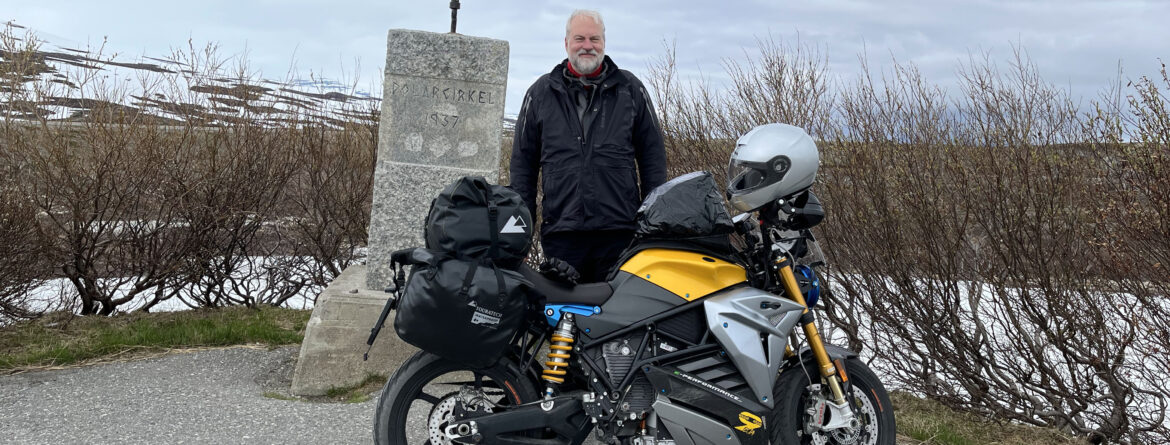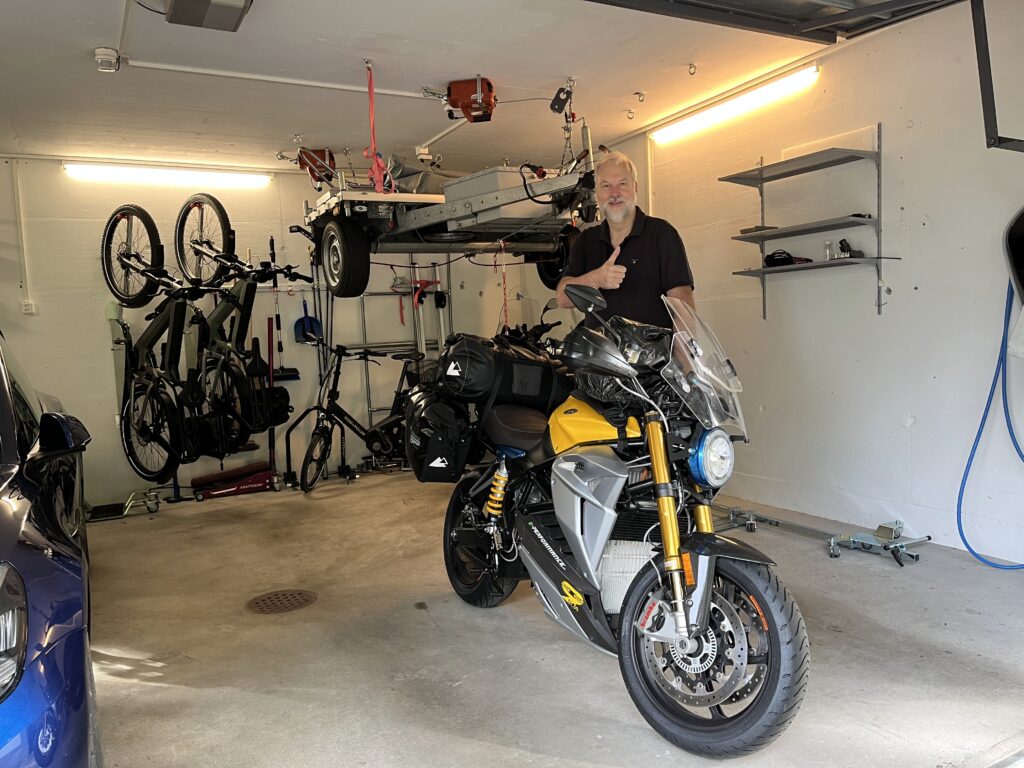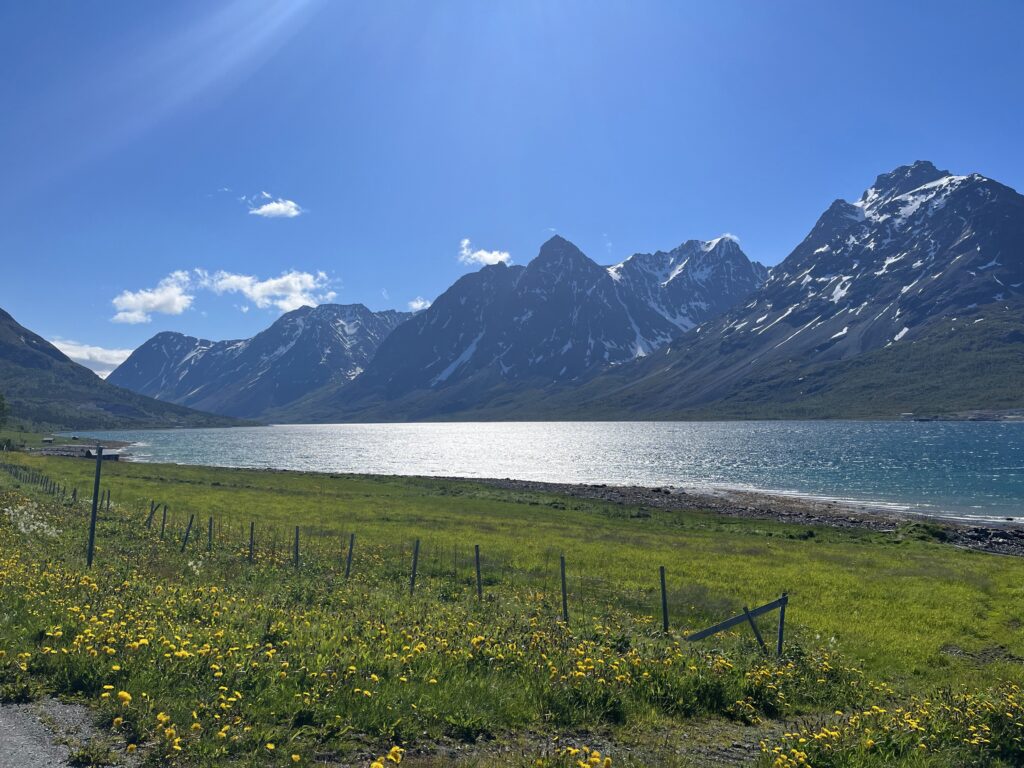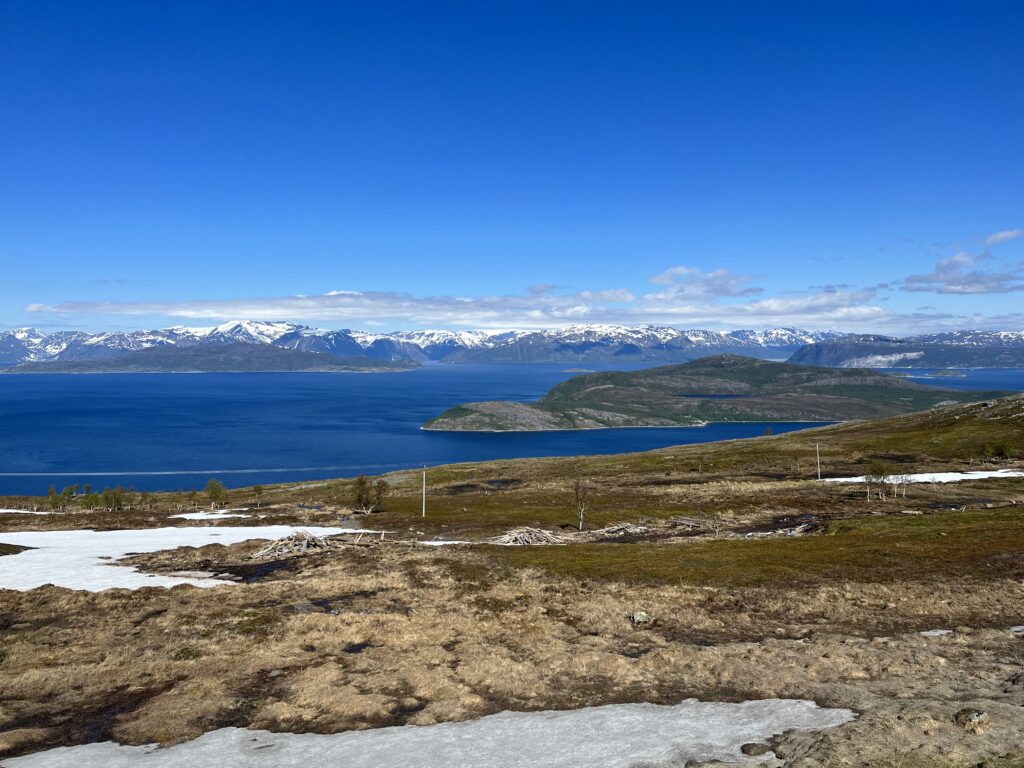
North Cape is the northernmost tip of European mainland, located in the Scandinavian country of Norway. With a 307m high (1007ft) cliff overseeing the Barents Sea, it is a popular destination for tourists eager to get there on the longest day of the year (20th or 21st of June, the summer solstice). A sizeable portion of them take to the road on their motorcycles, making their way up north surrounded by the breath-taking landscapes of the Land of the Midnight Sun. It is a journey like no other, so much that many of them cannot help but make their way back there again and again over the years.
Sixty-three years old Hans Jürgen from Switzerland is one of them, albeit sort of a pioneer in his own way, and for a simple but important reason: last year, he chose to combine his newfound love for electric motorcycles and take it to the end of the world.
To view the full route, click here
“I’ve been riding motorcycles since I was 15 years old. My wife and I owned more than ten motorbikes in our life, and most of them were BMWs. I went to Norway maybe four or five times; I’ve done a lot motorcycling in Switzerland, Germany, the Dolomites and Sardinia (Italy); overall, I did around 200 thousand kilometres before I retired, riding around across Europe.
When our grandchildren arrived, we thought we had to change something. Travelling around is fine but something had to be different. First of all, we changed all of our cars to electric vehicles, and we have been driving only EVs for the last six years. Then we thought about trying to what was available in terms of electric motorcycles. I saw a video with Adrian von Büren (Energica’s importer in Switzerland) and 1000ps (one of the most important motorcycle-related online magazines in German) about the Energica EsseEsse9, and we then decided to go to Stansstad to meet with Adrian.

The bike looked really good, so we booked a weekend to try the bike on the road to make our own opinion about it. We knew something about electric vehicles already by using our cars: for example, the fact that you don’t need to hit the brakes all the time and how incredible the torque is. We were still pleasantly surprised, so we did make an order for one.
We were really convinced by the EsseEsse9, even though we were aware that it is not a motorcycle designed for touring as I had been used to, especially given my height. I’m almost 2 metres tall (around 6’6’’). So, I started a little project to change a few things and make it suitable for touring: I first lowered the foot pegs without making any compromise in cornering, which made the bike more comfortable for me to ride in long distances. I also bought waterproof bags from Touratech and added a windshield that gave me more cover. I also installed the same type of hand protection that you can now find on the Experia, because I know from past experiences, that the temperature at North Cape can be around 4-5 degrees Celsius in June and bought a charging adapter to manage with one cable for all AC charging to reduce the weight.”
He did have plenty of time to focus on this project to turn the EsseEsse9 into a more of a touring-oriented motorcycle, unfortunately. He received the bike in 2020, at the highest point of the Covid-19 pandemic, whilst the following year the Norwegian border was still closed for tourists.
“We decided instead to ride to the Dolomites and around Switzerland – at times we even rode up to 500-600kms per day. This experience ultimately led me to purchase an EsseEsse9+, as I was convinced that it was possible indeed to do some touring with it.”
And after two years of eager anticipation, 2022 came and the plan was finally set into motion (literally).
“Last year I was finally able to do it – and my bike was ready for the big trip. I started in early June and the goal was to get to North Cape for the solstice (21st). I got there on the 20th, just in time for the midnight sun. I decided this time not take the ferry from Kiel or Hirtshals to Norway as others normally do, so I did it all on the road, except from the short ferry trip from Denmark to Sweden (Helsingør to Helsingborg). In the past I had used the long bridge from Copenhagen to Malmö, but I wanted to try something different. Everything else was on the road, for a total of more than 4000kms.” “I roughly did 300-400km a day, not more, because I wanted to enjoy the trip. And then during the day I always charged once in the morning, and once or twice in the afternoon. As I made the experience, I realised that if you don’t know exactly where your next charging station is, it’s not recommended to go below 10%. I roughly charged after 130km; I usually felt like having a break, drink a coffee or a tea anyway, and in 20 minutes I was back on the road. It’s normal for me to never go for 200km in one go, as that doesn’t fit my profile as a rider anymore. I did at a fast pace and for longer distances in the past, especially on the motorway, but now I just want to enjoy the ride. It is also better, in my experience, to fast charge from 20 to 85% to get the best charging speed.”

While driving into Norway’s capital city, Hans Jürgen had quite an unusual experience, especially for someone who isn’t a local:
“I remember one day I took the road early in the morning” he continues. “I was driving into Oslo on a Sunday, and I witnessed something that I don’t think I would have in other countries such as Germany or Italy, for example. It felt like eight out of ten cars on the roads were electric! You know these countries are quite ahead in terms of transition to electric mobility, but to witness it on a three-lane motorway, being surrounded by mostly EVs, no smell of gasoline, no loud noises… it was tremendous! On the other hand, if you see any motorbike, they’re likely Harley Davidson, so the loudest petrol-engine motorcycles you can find.
“Up there, if you don’t follow a specific plan, you don’t know if the charging station is going to work, or if your charging cards are compatible or if the station is where you thought it would be. For example, in the northern part of Norway, if you look at the map and say ‘I think there’s a charging station in around 100km’ and it’s the only one around, it can get really lonely out there. You just assume the charging station is going to work. Now that I’ve done it, I know it is not a problem. (I’ve tested around 50-60 charging stations I had never tried before). To tell the truth, every time charging started, (you usually hear a loud click if the handshake with the SS9 was successful and the charging station engages), it was a little bit of a relief. That’s an experience. If you ride in the Dolomites, you know that if a charging station doesn’t work, there’ll be another one in a 10-20km radius. If you ride to North Cape well, you can find yourself completely on your own with only a charging station in more than 70 km of radius. And if that doesn’t work, you’re simply stuck, and there’s not even a building nearby where you can ask someone to allow you to slow charge your bike for a few hours.
Owning and riding an electric motorcycle has its own differences compared to more traditional vehicles; sometimes, however, those differences may turn out to be of the unexpected kind. And the amount of attention received is one key and unavoidable ingredient of any two-wheeled, electric-powered trip.
“There was never a time when I stopped at a charging station without having interested people around me. I had around 100-120 conversations with people all the way up to Norway. First in German, then after I passed the border in English. I ended up having half-hour talks with people who had never seen an electric motorcycle before; they were asking me how it was like to ride an electric motorcycle; how did I feel… why did I do it and so on. Sometimes I didn’t even had time to take my helmet off before I got asked questions, so I learned to ask for a moment first in order to remove it and stick the charging cable in, before I could talk. It was unbelievable.


I’m sure there haven’t been many people doing this type of trip on an electric bike before and that’s why I did it; I wanted to prove that it is indeed possible.
And don’t get me wrong, I chose an electric bike because for me it is much more fun to ride – the fact that helps the environment is obviously a huge plus. But I would have never bought one if it thought petrol-engine motorcycles were still better – and I had plenty of them throughout the years! But today I can tell you that I will never go back. The feeling of tremendous acceleration and braking with just closing the throttle, cornering in a hairpin bend, and overtaking always in the “right gear”. All of this let me experience a completely new feeling of movement and synergy with the bike. And the smoothness of acceleration without tractive force interruptions while shifting gears up and down makes the ride also very pleasant for the passenger while traveling.
The Experia is going to be my only bike moving forward. Back in EICMA 2019 we had suggested about a bike of this kind, and we got it. I will travel alone as well as with my wife and also take the bike with the camper and then tour with the bike around the areas we visit, together. I have sold all of my ICE bikes, so now we enjoy being fully electric!”
